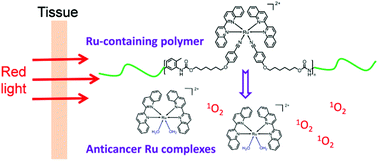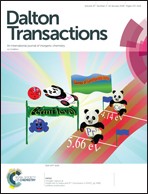Photoresponsive ruthenium-containing polymers: potential polymeric metallodrugs for anticancer phototherapy
Abstract
This Frontier presents the recent development of photoresponsive Ru-containing polymers for cancer treatment. These novel Ru-containing polymers are prepared by introducing photoresponsive Ru complexes into polymers. Based on their chemical structures in aqueous solutions, these polymers can self-assemble into different nanostructures. The self-assembled nanostructures can circulate in the blood stream, accumulate at tumor tissue, and can be taken up by tumor cells. Red light, which can penetrate into tissue deeply, can induce the photodissociation of these polymers and sensitize singlet oxygen (1O2) generation. Both dissociated Ru complexes and generated 1O2 can inhibit the growth of tumor cells. Photoresponsive Ru-containing polymers provide a new platform for combined photodynamic therapy and photoactivated chemotherapy. The design strategies, self-assembly, photoresponsiveness, and anticancer effects of these polymers are introduced. Some remaining challenges for Ru-containing polymers for phototherapy are discussed.

- This article is part of the themed collection: 2018 Frontier and Perspective articles


 Please wait while we load your content...
Please wait while we load your content...